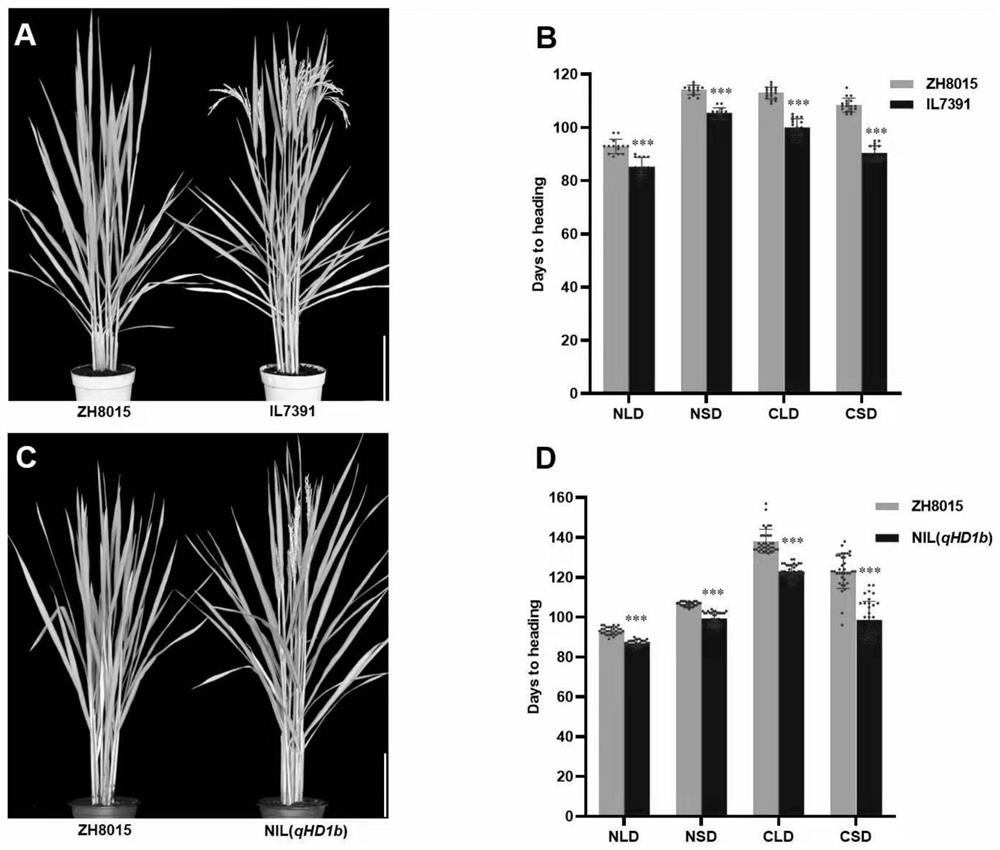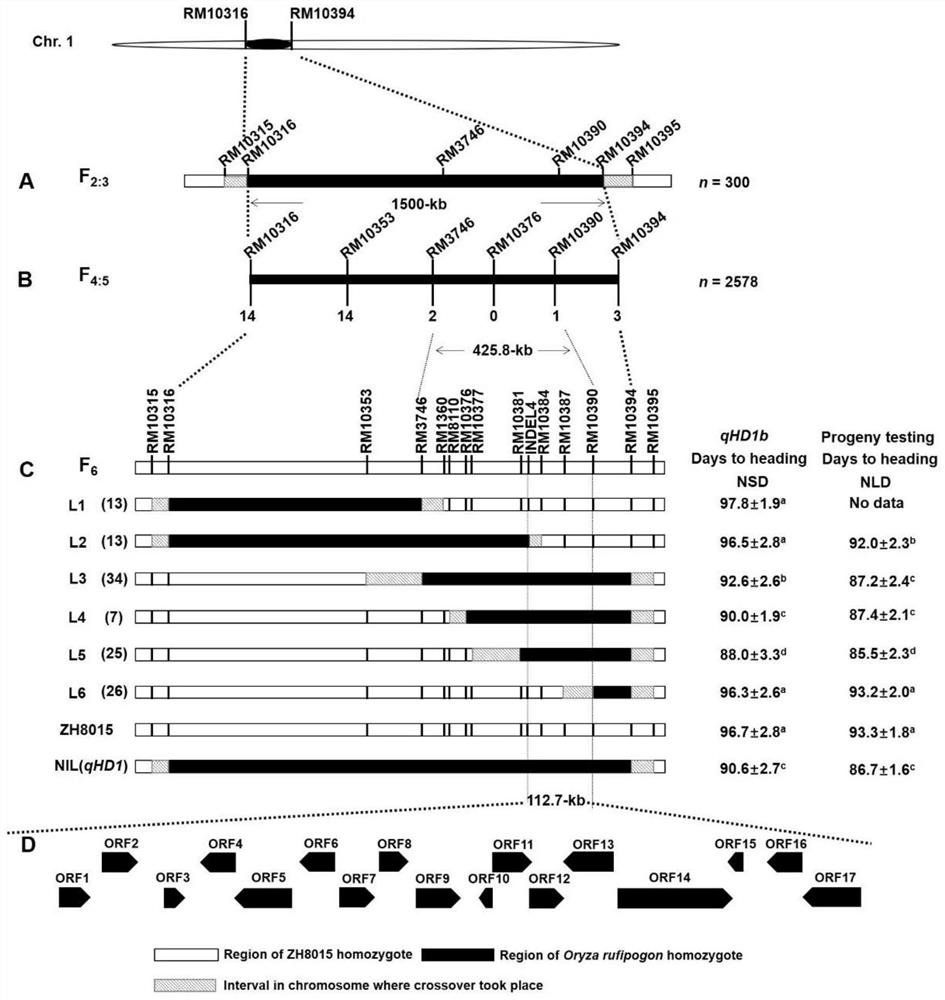QTL qHD1b for promoting rice heading and application of QTL qHD1b
A rice, RM10390 technology, applied in the fields of molecular biology and plant genetics and breeding, can solve the problem of insufficiently clearly explaining the regulation mechanism of rice heading stage, and achieve the effect of improving traits
- Summary
- Abstract
- Description
- Claims
- Application Information
AI Technical Summary
Problems solved by technology
Method used
Image
Examples
Embodiment 1
[0188] Example 1 Phenotype of qHD1b
[0189] Using common wild rice (Oryza rufipogon) as the donor parent, an introgression line was constructed and a new QTL for heading date was identified. Specifically, 14 polymorphic markers were used to construct an introgression line IL7391 ( figure 1 ). Under different conditions, the heading date of IL7391 was earlier than that of the recurrent parent ZH8015. Among them, IL7391 (85.3±3.3d) headed 7.5 days earlier than ZH8015 (92.8±2.3d) under Hangzhou natural long-day (NLD) conditions ( figure 2 A, B); Similarly, under natural short-day (NSD) conditions in Lingshui, it was found that IL7391 (105.4±1.7d) headed 8.8 days earlier than ZH8015 (114.2±1.9d) (Fig. 2B). In the growth incubator under the conditions of artificially controlled long day (CLD) and artificially controlled short day (CSD), the days of heading date of IL7391 were about 13.0 and 18.1 days earlier than that of ZH8015 ( figure 2 B).
Embodiment 2
[0190] Embodiment 2 QTL analysis of heading stage
[0191] In order to analyze the QTL of the heading stage gene region, 150 IL7391 / ZH8015 F 2:3 family lineage. Screening from F 2:3 300 plants sampled in families (2 plants per row). Two QTLs for heading date were detected under NLD, which were qHD1b located on chromosome 1 and qHD7 located on chromosome 7. No QTL for heading date was detected in the other 4 introgression areas ( figure 1 ). The LOD values of qHD1b and qHD7 were 37.99 and 2.8, respectively, and the explained rates of phenotypic variation were 47.7% and 3.8%, respectively. The direction of the additive effect of the two is opposite, qHD1b Oryza rufipogon Alleles lead to early heading in rice (additive effect -3.22), while qHD7 Oryza rufipogon Alleles lead to late heading in rice (additive effect 0.14). Therefore, we decided to focus further analysis on qHD1b, which has a greater influence on the estimation of heading date than qHD7. Thus, the qHD1b ...
Embodiment 3
[0192] Example 3 Separation of NIL (qHD1b) and Fine Mapping of qHD1b
[0193] In order to further locate qHD1b, F 4:5 There are 52320 strains in the family. Using 6 SSR markers located between RM10316 and RM10394, randomly select F 4:5 200 individuals in the family were analyzed for QTL. qHD1b detected 49% of the phenotypic variation. We further investigated whether qHD1b is involved in the photoperiod response in rice. Therefore, we obtained a homozygous allele from the rice F10316-RM10394 region 4:5 NIL(qHD1b) plants were isolated from the population ( figure 1 ). After observing the photoperiod response in the field and in the incubator, it was found that NIL(qHD1b) plants consistently flowered earlier than ZH8015 under four different conditions ( figure 2 C, D). This again shows that qHD1b Oryza rufipogon Alleles promote flowering regardless of day length.
[0194] Meanwhile, we are in F 4:5 2578 very late pumping plants were selected in the population, and qHD...
PUM
 Login to View More
Login to View More Abstract
Description
Claims
Application Information
 Login to View More
Login to View More - R&D Engineer
- R&D Manager
- IP Professional
- Industry Leading Data Capabilities
- Powerful AI technology
- Patent DNA Extraction
Browse by: Latest US Patents, China's latest patents, Technical Efficacy Thesaurus, Application Domain, Technology Topic, Popular Technical Reports.
© 2024 PatSnap. All rights reserved.Legal|Privacy policy|Modern Slavery Act Transparency Statement|Sitemap|About US| Contact US: help@patsnap.com










